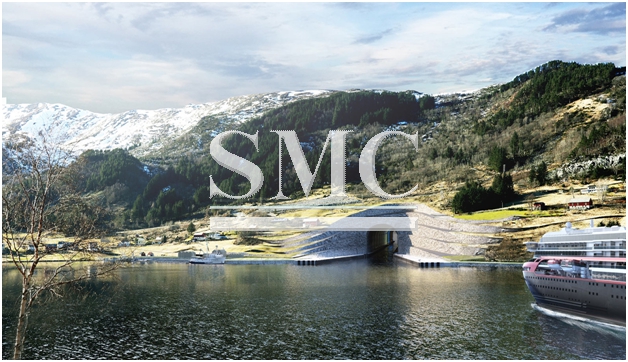
- Présentation de l'entreprise Le noyau de Shanghai Metal Vision & philosophie Partenariat Certificat Culture d'entreprise
- Nos services Conception et ingénierie Maintenance et entretien Fabricant & Fabrication Mise à jour et transformation Stockage et logistique Traitement et commerce
- Gestion d'entrepise Notre histoire Responsabilité globale
- Centre d'achat Stagiarie
- Produit métallique Produits en aluminium Produits en cuivre Produits revêtus métalliques Produits en acier inoxydable Produits en acier carboné Alliages spéciaux
- Construction & Projet Caillebotis en acier Étagère Structure en acier Pont en acier Système d'échafaudage Matériaux de construction Matériel Chimique One-Stop Solutions pour les Projects
- Conteneur Conteneur standard ISO Conteneur d'équipement Conteneur de stockage Maison conteneur Conteneur frigorifique / isolé Conteneur offshore
- Machine Machine à former des métaux Autres machines Machine à découper les métaux Machine de traitement des métaux Machine à cintrer Machine d'aggloméré
- Produits mécaniques Industrie automobile Divers Équipement d'amarrage Equipment marin Récipient à pression
- Système électromécanique Câble Automation Distribution d'énergie Système d'alimentation solaire Système de protection électrique Convertisseur Ligne de production Système d'éclairage
- Matériel médical Produits de nourriture Produits de voies aériennes Produits de soins infirmiers Produits d'injection
- Machines de construction
- projet epc
- Tuyaux de pétrole
- Tuyaux de l'eau
- Tuyau de gaz
- Bateau et accessoires d'amarrage
- Produit métallique pour la décoration
- Composant du transformateur
- Pipe d'échangeur de chaleur
- Pièces et accessoires de climatisation
- Chaudière
- Appareil de cuisine et de salle de bains
- Métal pour appareils ménagers
- Appareil solaire
- Ascenseur
- Toiture et plafond
- Câble
- Tank
- Emballage
- Pièces détachées et accessoires pour machines et équipements
- Moule
- Pièces d'automobile
- Rail et rail de grue
- Équipement de quincaillerie
- abrasif
- Construction de route
- Composants electroniques
- Matériaux de construction et de décoration
- Portes et fenêtres
- Réfrigérateurs
- News release Nouvelles de l'industrie métallurgique Nouvelles de la machinerie et de l'équipement Nouvelles de la construction et du bâtiment Nouvelles des produits mécaniques Nouvelles de conteneurs Nouvelles du système électrique Nouvelles des matériels médicaux
- Médiathèque Vidéo Image Suivez Shanghai Metal sur les médias sociaux
Norway look set to build the first ever ‘ship tunnel’
L'Administration côtière norvégienne a mis le cap sur la construction du premier tunnel à grande échelle au monde pour les navires. Le motif derrière la construction serait d'empêcher les navires de voyager dans les eaux dangereuses de la mer de Stadhavet, une étendue d'eau qui a fait 33 victimes depuis la Seconde Guerre mondiale.
Une fois terminé, le tunnel sera long de 1,7 km et situé dans la péninsule de Stad. C'est au "coin" de la Norvège, où le littoral se penche vers le nord-ouest. Il aura une largeur de 26,5 m et pourra accueillir 70 à 120 navires par jour.
La mer de Stadhavet étant une eau si dangereuse, c'est la zone où la mer du Nord et la mer norvégienne entrent en collision, créant un environnement hautement imprévisible de vents et de marées et entraînant une difficulté extrême pour les navigateurs.
Le projet a été estimé à 272 millions de dollars dans la région, une étude de faisabilité est actuellement en cours et la construction devrait commencer en 2019.
Le tunnel, conçu par Snøhetta, relie Selje à Moldefjord. Un pont sera construit au-dessus du point d'accès sud, permettant aux visiteurs de regarder les navires au passage.
Le projet a été annoncé pour la première fois en 2015; Terje Andreassen, chef de projet pour l'administration côtière, a toutefois déclaré: «Dans un paysage aussi délicat, le tunnel doit être plus qu'une simple intervention dans la nature. Nous mettons beaucoup d'efforts à le rendre esthétiquement attrayant. "
Le développement prendra au moins quatre ans.
The Norwegian Coastal Administration has set its sights on building the world’s first full-scale tunnel for ships. The motive behind the construction would be prevent ships having to travel on dangerous waters of the Stadhavet Sea, a stretch of water that has claimed 33 lives since World War II.
Once completed the tunnel will be 1.7km long and situated in the Stad peninsula. This is at the “corner” of Norway, where the coastline bends to the northwest. It will be 26.5m wide and be able to accommodate 70 to 120 ships a day.The reason for the Stadhavet Sea being such a dangerous piece of water is that it is the area in which the North Sea and the Norwegian seas collide, creating a highly unpredictable environment of winds and tides and resulting in extreme difficulty for sailors to navigate.
The project has been estimated to cost with the region of $272m, a feasibility study in currently is currently being undertaken with construction hoping to begin to 2019.
The tunnel, which was designed by Snøhetta, runs between Selje and Moldefjord. A bridge will be built over the southern access point, allowing visitors to watch the ships as they pass.
The project was first announced in 2015; however, in the back end of 2016, Terje Andreassen a project manager for the coastal administration, said: “In such a delicate landscape, the tunnel has to be more than just an intervention in nature. We put a lot of effort in making it aesthetically appealing.”
The development will take at least four years to complete.
